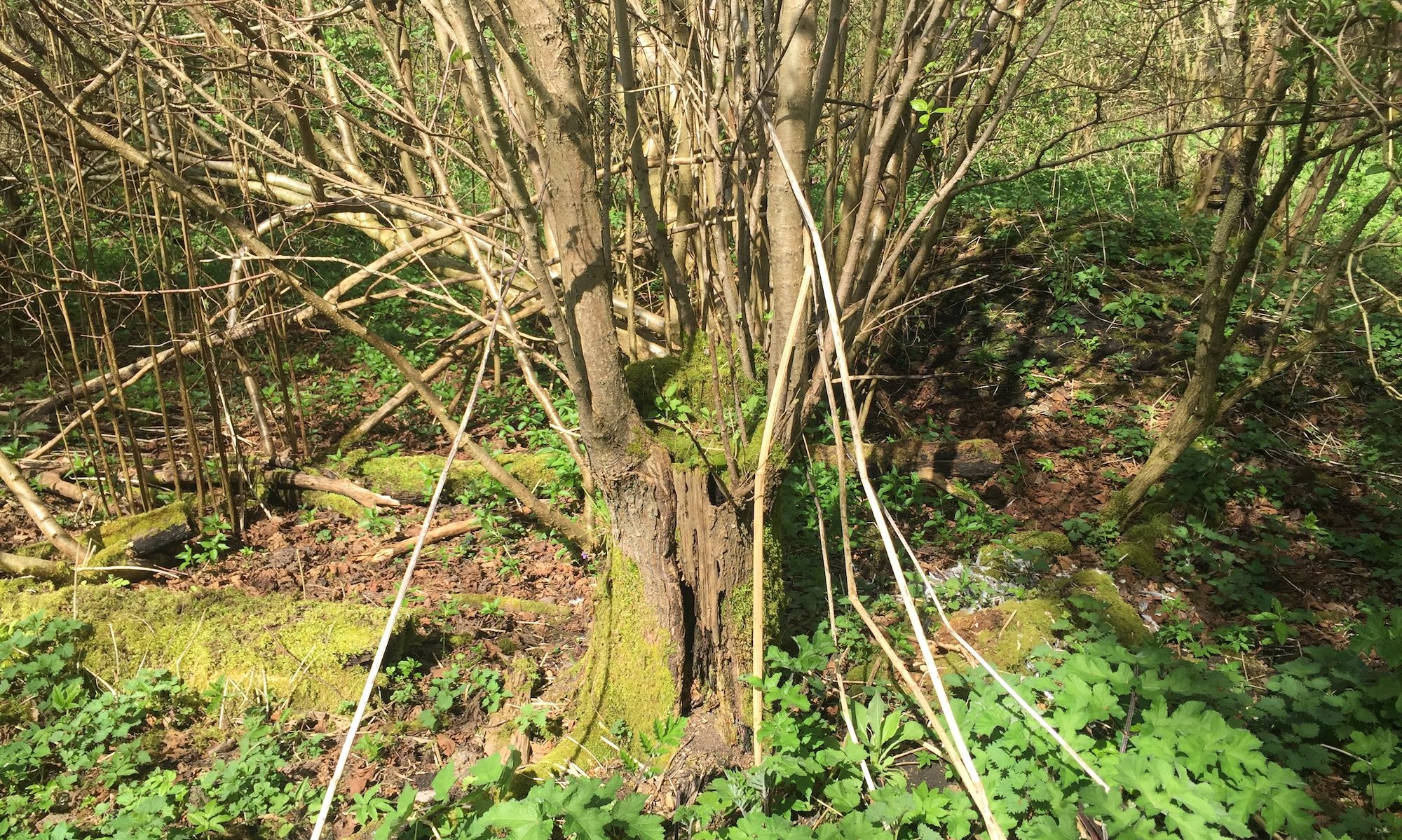I’ve never been a bird watcher, but one of the aspects of opened-ended activities like owning a wood is that you’re drawn outside your comfort zone. Early on I wanted to know what the “big birds” were (common buzzards) and I spent time trying to creep up on the woodpeckers I could hear drumming on tree trunks (great spotted woodpecker). As well as small songbirds, I’ve since seen or heard pheasants, pigeons, rooks, tawny owls, mallard ducks, and most recently a heron a couple of times by the South Ditch.

I also believe I have heard woodcocks, and I am particularly keen to pin this down. They are a priority species and as Century Wood has wet woodland areas, it should provide an ideal habitat for them. When I bought the wood, the agent specifically said to look out for them as he’d seen them.
Last year, we went to the Timber Festival and there was a session by the University of Cumbria about monitoring wildlife with equipment like trail cameras. I was familiar with most of it since I’ve been using trail cameras at the wood for several years, but I learned how wary foxes are of cameras which I explains why I’ve only managed to get photos of them walking away from the camera – presumably passing from behind the trunk it was attached to.

However, completely new to me were the AudioMoth sound recorders. These are developed by Open Acoustic Devices, which began as a research project at the University of Southampton. They’re the audio equivalent of a trail camera, and can be configured using a computer and then left on site for weeks or months. One particularly attractive possibility is identifying bat species from their ultrasonic echo location sounds that we cannot hear: we do have bats at the wood and it would be great to know more about them. The whole AudioMoth ecosystem seems solid and high quality, and they are used by research projects so they have to work reliably.


To get started, I’m experimenting with one in the garden at home during the Christmas holidays and then I’ll take it to the wood and see what I get.


Have you used the merlin app to id birds, it seems to work very well
Hi Iain, I too am in Shropshire. I too have a Audiomoth I use to identify bats and small terrestrial mammals plus crickets! They are great but need a bit of setting up. My first night I had over 32 gigs of data – now about 1-2GB. Drop me an email if you want some pointers.